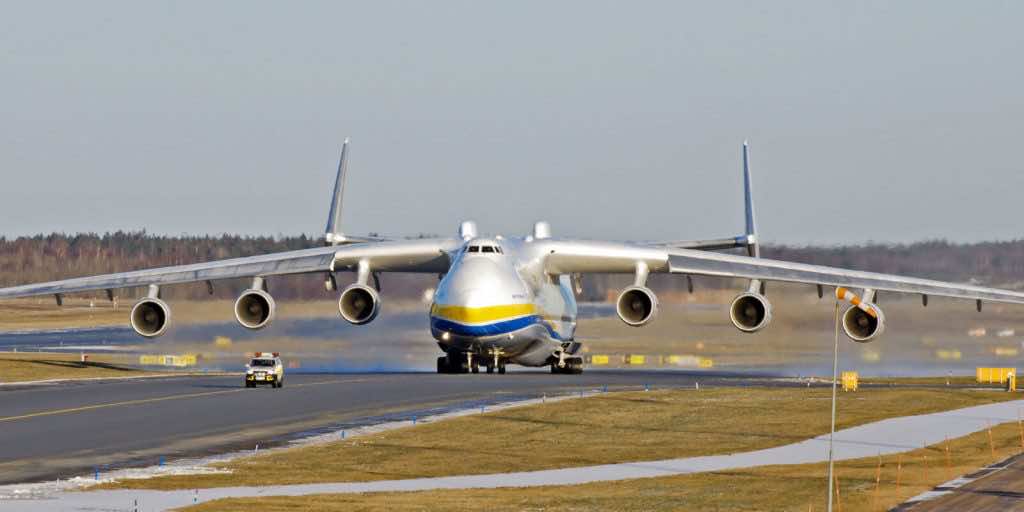The Antonov AN-225 has been recognized for its enormous size ever since its inception. The reality that its wings could hold six turbofan engines gives you an idea of how huge it was. The only term that can accurately depict its magnitude in a single syllable is its moniker, ‘Mriya.’ In Ukrainian, the term means ‘Dream’ or ‘Inspiration.’ When it came to the exact figures on the measure, it measured 84 meters from nose to tail. It easily surpassed the biggest aircraft, such as the Boeing 777-9, 777-8, and Airbus A340-600, which measure 76.7, 76.4, and 75.4 meters, accordingly. The Lockheed C-5 Galaxy is a similar transport plane in length, measuring 75.3 meters.
If the aircraft’s length has sparked your curiosity, pause until you see the wingspan. Only the Hughes H-4 Hercules and the Scaled Composites Strat launch could compete with the plane’s 88.4-meter wingspan. The maximum takeoff weight is 650 tonnes, while the payload capacity is 250 tonnes. It would also be unfair to omit the elevation of the airplane after describing its length and wingspan. The An-225 stood 18 meters tall. To convey a sense of scale, it is roughly the height of a six-story skyscraper.
The Antonov An-225 Mriya was a one-of-a-kind airliner in the sky. If a conventional cargo plane is like a hovering forklift, the Mriya was more like a flying freight ship due to its size and cargo capacity. The Soviet Union first acquired the enormous aircraft to transfer the communist government’s latest spaceship, the Buran Space Shuttle. To transport the Buran, the Soviet Union had to acquire a totally new airplane, which it believed would subsequently serve as an airborne deployment platform. Antonov was one of the Soviet Union’s main aerospace companies at the era, specializing in freight airplanes.
The large freight plane was built at the request of the Soviet government during a three-year period beginning in the mid-1980s. The possibility of carrying the Russian spaceship was granted engineering attention, as shown by the twin-tail structure meant to catch the airflow from around any object put on top of the aircraft. Goods were carried around the front of the plane since the nose could be opened, providing for simple loading and unloading of cargo straight in and out. However, the plane featured 32 wheels in all, four of which were under the nose, to control the mammoth technical marvel. Throughout its career, the magnificent plane set over 200 records, notably airlifting the world’s biggest freight and conveying the world’s biggest cargo by air.
But, because the world’s only An-225 has been wrecked, we’re unlikely to hear the term again unless, of course, a replacement one would be created. The destruction of the Antonov An-225 “Mriya,” the largest global cargo jet, by the Russian army amid battles at the Antonov Airfield in Kyiv, Ukraine, has saddened persons in the aviation industry, where it has a close to fundamentalist popularity.

